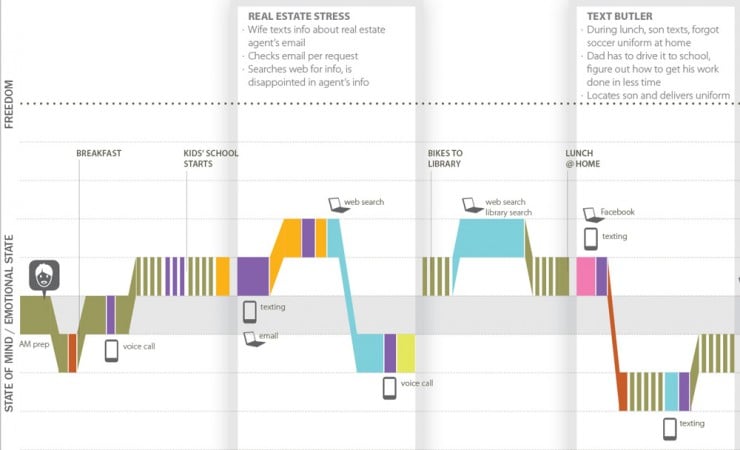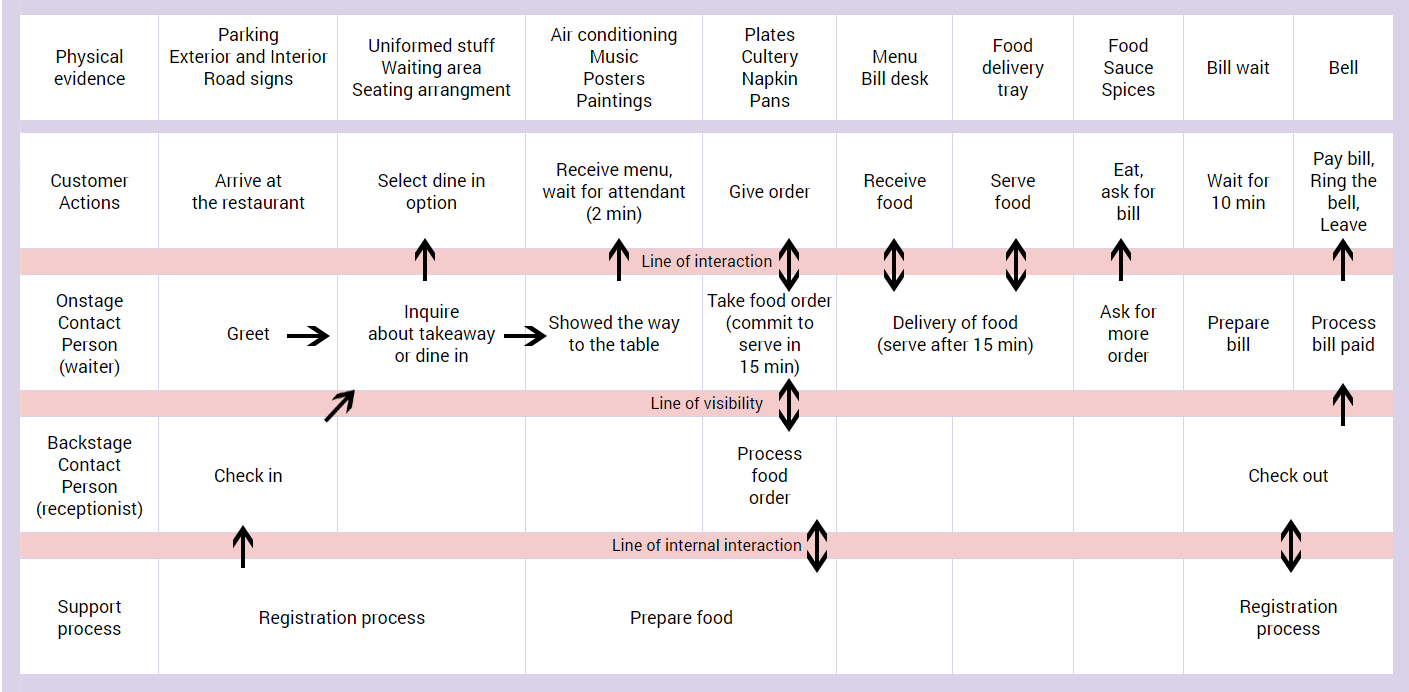Journey maps are a standard user experience tool. Journey maps come in different shapes, sizes, and formats. Depending on the context, you can use these tools in a variety of ways.
In this article, we will examine experience journey mapping from different planes. We will also discuss the definition, importance, and possible examples of the subject matter.
What is Experience Journey Mapping
An experience journey map is a visual representation of the process that a user or customer goes through to achieve a specific goal. For effective mapping, you must put yourself in your customer’s shoes. You must envision the user’s motivations and pains throughout the buying cycle or through certain processes, helping you understand their overall experience.
However, understanding the experience is not enough. To create a proper journey map, you’ll want to visualize the customer experience and create a sharable diagram for you and your employees.
You may be thinking, “I don’t think experience journey mapping is necessary. We understand the pain points of our customers.” Don’t be fooled! Experience journey mapping is an extremely helpful tool to maximize customer success.
Three Key Values of Experience Journey Mapping
1. It Refocuses Your Company With an Inbound Perspective
Outbound marketing is slowly becoming a way of the past – journey mapping helps you focus on inbound marketing initiatives which is a softer, more personal way to reach your prospective customers. Outbound marketing can be considered disruptive to customers and often aims marketing tactics at poorly targeted or uninterested audiences.
Outbound marketing tactics are also costly and oftentimes inefficient. Your customers and prospective users may find these tactics annoying.
On the flip side, inbound marketing has the opposite effect. It involves creating valuable content for your existing customers and people who are searching for your services. The strategy prioritizes, grabbing the attention of your audience over-focusing on direct sales. With inbound marketing, the purchases will come naturally.
Experience journey mapping will help you gain a better understanding of your audience as well as what types of valuable content they may be interested in. Only you know what information your company can offer to provide value for your clients or customers – make sure it’s thought-provoking and attention-grabbing.
2. It Helps You Create a New Customer Base
When you don’t understand your customer’s journey you may not know the kind of demographic that is ideal for your services.
Marketing to an audience without identifying your ideal customer is a waste of your resources. Understanding the needs and pain points of your audience and mapping their journey to optimize the customer experience will help clarify your goals.
With the insight you gain in the process, you can sharpen your marketing strategy.
3. It Helps Install a Customer-Focused Mentality Throughout Your Company
As companies grow, coordinating between departments may become a challenge. Designing and sharing a map of your customers’ journey can help different departments adjust their tactics.
8 Steps to Create a SaaS Customer Experience Journey Map
1. Set Clear Objectives
What goals do you want to identify through your customer experience map? Upon what factors do you base your customer experience? What problems are you trying to solve for your customers?
These are the kinds of questions you need to ask yourself to begin the process of creating an effective journey map. To set objectives that are relevant to your audience, you will want to create buyer personas for your target audience segments.
A buyer persona is a fictitious buyer that represents all the demographics and psychographics that your potential customers represent.
We typically recommend creating two or three different personas to start. A clear persona will help you design and adjust many aspects of your journey map.
2. Profile Your Buyer Persona and Define the Goals
This is the step where you will need to conduct market research in order to collect information needed to create your buyer personas.
Outside of face-to-face conversations, questionnaires and survey forms are two of the best ways to extract feedback from your clients or users. You will want to collect feedback from your prospective customers and your existing customers. Ask questions like:
- How did you hear about us?
- What attracted you to our website?
- What solutions are you looking for or what problems are you hoping to resolve?
- How long do you spend on our website?
- What content did you find most valuable?
- How easy was it to navigate through our site content?
3. Identify Your Target Customer Persona
From your survey or questionnaire, you will learn about different customer needs and motivation. This will help narrow your focus and identify your ideal target personas.
Experience journey mapping should track the path of a particular customer as he/she navigates through your site. You will want to create a single journey map for each buyer persona, starting with your most common customer type.
4. List Out all of Your Touchpoints
Website touchpoints are the areas on your website that require customer interaction. From your customer research, you will want to list all of the touchpoints on your site.
Sites with too many touchpoints or opportunities for conversion could be considered complex whereas sites with too few touchpoints could cause you to lose out on customer acquisition.
Whichever the case, listing all of your website touchpoints can help you understand the ease or complexity of your site’s navigation and opportunity to convert. Do not limit your touchpoint analysis to your website. You can do the same for your social channels, paid ads, third-party review sites, and email marketing.
5. Identify all the Elements of Your Map
Depending on the purpose, you can choose a specific type of map. Here are four types of experience journey maps:
- Current State: Visualize the emotions, actions, and thoughts of your customers’ interactions with your site. Current state maps are best for tweaking your customer experience journey mapping strategy.
- Day in the Life: Visualize the emotions, actions, and thoughts of customers as they partake in different activities daily. This map gives you insight into the daily lives of the customers as they interact with your site.
- Future State: Predict and visualize the customer’s future actions, emotions, and thoughts. You can use these maps to set a clear objective and illustrate your vision.
- Service Blueprint: Start with a simplified version of one of the maps above. Then they lay different factors that deliver certain experiences.
6. Identify the Resources that You Need and the Resources You Already Have
You must take inventory of your resources. As you create your journey map, you may reveal some faults in your customer support system. The issue may be due to the face that your team lacks the appropriate tools to follow up with customers. Experience journey mapping tends to reveal your weaknesses. Take this opportunity to list the resources that you will need to make adjustments – including the resources on your map that can help you predict their impact on your business. With this evidence, you can convince decision-makers in your organization to purchase these tools.
7. Take the Experience Journey Yourself
Your work does not end at the conclusion of the design phase. Once complete, you must test and analyze the experience map. Why do visitors bounce off the page? What are better ways you can engage your users through customer support? Upon completion of the experience journey mapping, these are questions that you should be able to answer. An analysis of results can help you identify the unmet needs of your website visitors. Experience journey mapping remains a hypothesis until you try it out for yourself.
8. Make the Necessary Changes
Implement the appropriate changes. Adjust your website to meet your goals. Experience journey mapping is a work in progress. You should be open to conducting monthly reviews and making regular tweaks.
Experience Journey Mapping Examples
There are different ways of mapping out a customer’s experience. You can base your mapping on what you are looking to evaluate and what best suits your company, whether it’s the physical process, emotional process, or both.
To map the experience journey, list each stage, and evaluate the process. Take note of the user’s thoughts and experiences from the moment they step into your business or register for your site. Dive into what your users go through when using your service.
This is important for understanding how effective and satisfying your software is to customers. “Short and Sweet” is not necessarily a requirement. Sometimes, it can be beneficial to add additional steps instead of taking them away.
Quick and easy is not always the way to go and can be harmful to retention if users are not satisfied. Your goal is not to have an easy process but to have one that optimizes the user experience. Below are some examples of experience maps:
1. eCommerce Experience Journey Map:
2. B2C Experience Journey Map:
3. Retail Industry Experience Journey Map:
Experience Journey Mapping: A Way into the Minds of Your Customers
It can be challenging for any company to find a way into the minds of their customers. You may be wondering why some customers spend a lot of time browsing around, adding items to carts only to abandon them. A likely cause of this behavior is poor customer experience.
Through experience journey mapping, you can determine the path that customers need to take to purchase your products and services.
Customer experience journey mapping highlights the pains that your consumers have to endure to procure your services. With the right tweaks, experience journey mapping can help you design a better user experience.
Excellent user experiences can optimize customer success and minimize churn. Review your website’s user experience with experience journey mapping.
At Insivia, we work with a wide variety of SaaS, Technology, and Device companies to identify the best solutions to enhance user experience and customer success.
Consult with us to find out whether experience journey mapping is appropriate for your organization. We will walk you through some of our journey map templates and find the best solution for you.



